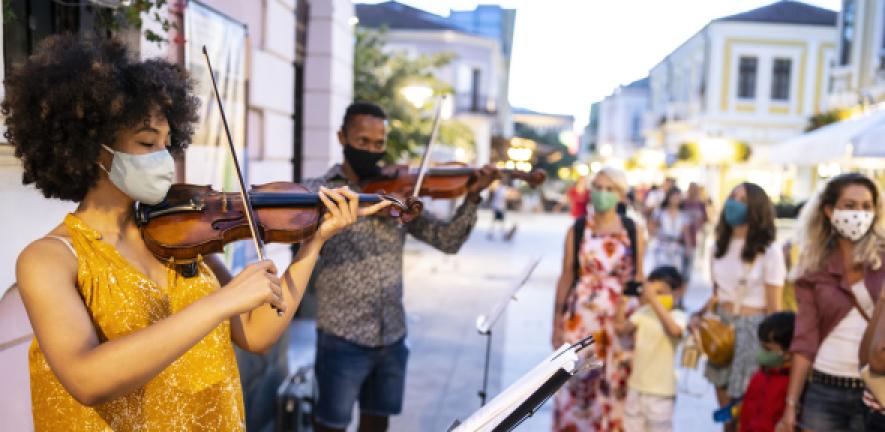
This three-day virtual study group hosted by ICMS and delivered by V-KEMS explored the challenges related to the delivery of Large Events during the COVID-19 pandemic.
Background
Since April 2021, VKEMS (Virtual Forum for Knowledge Exchange in the Mathematical Sciences) has delivered a series of Virtual Study Groups considering minimising risk / impact of COVID-19 in a range of scenarios (including train travel, opening up higher education and the impact on cardiovascular waiting lists).
We have now been tasked by RAMP Continuity Network (a UKRI funded project) to undertake a series of Virtual Study Groups on their behalf.
The first Virtual Study Group has the theme - COVID Safety in Large Events. This was a three day event, starting on Tuesday 13th July. This three day event was an intensive session bringing mathematical scientists and other disciplines together to solve end user defined challenges.
Study Groups work best when a real-world problem / scenario is posed at the start of the three days. This enables the assembled scientists to develop the generic thinking required but also provide some pertinent insight for the particular case considered. We worked with a number of stakeholders to identify appropriate problems/scenarios for this study group. We provided details of outline problem during the event.
The study group covered the spectrum of large events from indoor to outdoor, ticketed to un-ticketed, dynamic to static. Some areas which were looked at:
-
How to partition attendees? What effect do bubbles have on probable transmission rates? How does partitioning by age affect the transmission? Are there other partitions which could be used? How can we avoiding risky queuing?
-
What physical interventions could be made? What is the role of ventilation? Can staircases and other shared spaces be managed to reduce the probability of infection? What about cleaning strategies? Where and how often?
-
What is the role and impact of testing? Can we model 100 % testing with 20-minute result time and its impact on arena filling? What about longer test times and what is the optimal number of tests to do? Can we envisage how "immunity passports" might help?
-
What about support workers? How do we effectively protect those working in these spaces with shift patterns and rotas?
Following the event, a working paper was developed, which outlined some potential modelling solutions.

